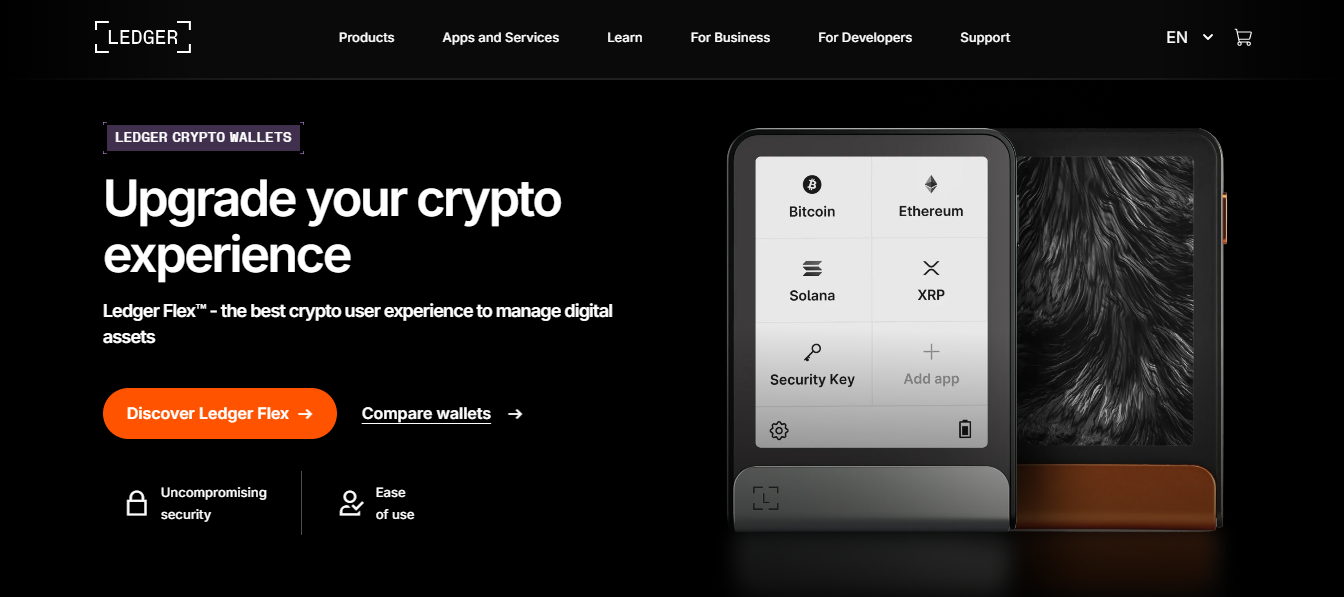
Secure access to your cryptocurrency assets with Ledger's multi-layered authentication system
Ledger employs a unique security model that differs significantly from traditional online accounts. Unlike conventional login systems that rely on usernames and passwords stored on remote servers, Ledger's security is centered around your physical hardware wallet and recovery phrase.
When we talk about "Ledger Login," we're referring to the process of accessing and managing your cryptocurrency assets through Ledger Live software while your private keys remain securely stored on your Ledger device. This approach ensures that your sensitive information never touches internet-connected devices, providing unparalleled protection against remote attacks.
The core principle behind Ledger's security architecture is that your cryptocurrencies aren't actually "stored" in the Ledger device or Ledger Live application. Instead, your device safeguards the private keys that prove ownership of your assets on their respective blockchains. This fundamental understanding is crucial for properly securing your digital wealth.
Different ways to access and manage your cryptocurrency assets
Connect your Ledger device via USB to manage your portfolio, send and receive crypto, and access DeFi applications through the desktop application.
Use Bluetooth connectivity (Nano X) or USB-OTG cables (Nano S/S Plus) to manage your assets on the go with the mobile application.
Connect your Ledger device to third-party Web3 applications like MetaMask, OpenSea, or Uniswap while maintaining security through Ledger.
Multi-layered protection for your cryptocurrency assets
Ledger devices use certified secure element chips, the same technology used in passports and credit cards, to provide military-grade protection for your private keys.
Your Ledger device is protected by a 4-8 digit PIN code. After three incorrect attempts, the device wipes itself, protecting against brute force attacks.
Your 24-word recovery phrase is the master key to your cryptocurrency assets. It's generated offline and never leaves your device.
Ledger Live automatically verifies that you're using a genuine Ledger device, protecting against counterfeit hardware that could compromise your security.
Every transaction must be physically confirmed on your Ledger device by pressing both buttons, ensuring no unauthorized transfers can occur.
Private keys are generated and stored in the secure element, completely isolated from your computer or smartphone, even during transactions.
Best practices to ensure the security of your Ledger device and assets
Write down your 24-word recovery phrase on the provided recovery sheet and store it in a secure location. Never digitize it or store it online.
Always verify receiving addresses on your Ledger device's screen before sending funds. This protects against address manipulation malware.
Regularly update your Ledger device's firmware through Ledger Live to ensure you have the latest security patches and features.
Only download Ledger Live from the official Ledger website. Avoid third-party app stores or unofficial sources that may contain malware.
Ledger will never ask for your 24-word recovery phrase. Be cautious of emails, messages, or websites requesting your sensitive information.
For advanced security, consider using the optional passphrase feature to create a hidden wallet with an additional layer of protection.
Your 24-word recovery phrase is the ONLY way to restore access to your cryptocurrency assets if your Ledger device is lost, stolen, or damaged.
Never share your recovery phrase with anyone. Ledger staff will never ask for it. Anyone who has access to your recovery phrase has complete control over your assets.
Store your recovery phrase securely offline, preferably on the provided recovery sheet, and keep it in a safe place separate from your Ledger device.
Common questions about Ledger login and security
No, Ledger Live doesn't require a traditional user account. Your cryptocurrency portfolio is managed locally on your device, and your private keys remain securely stored on your Ledger hardware wallet. There's no central database of user accounts that could be compromised.
If you lose your Ledger device, you can restore access to your cryptocurrencies using your 24-word recovery phrase on a new Ledger device. Your funds are safe as long as your recovery phrase remains secure. The recovery phrase is the master key to all accounts derived from your Ledger device.
No, accessing your funds requires both your physical Ledger device (to approve transactions) and your PIN code. However, if someone obtains your 24-word recovery phrase, they can restore your wallet on another device and access your funds without your Ledger device.
Yes, the Bluetooth connection on Ledger Nano X uses secure cryptographic protocols. Private keys never leave the device, and all transaction signing occurs within the secure element. The Bluetooth connection is only used for communication, not for sensitive operations.
You should update your Ledger device's firmware whenever a new version is available through Ledger Live. These updates often include important security patches, new features, and support for additional cryptocurrencies. Ledger Live will notify you when updates are available.
Take control of your cryptocurrency security with Ledger's hardware wallet protection
Get Started with Ledger